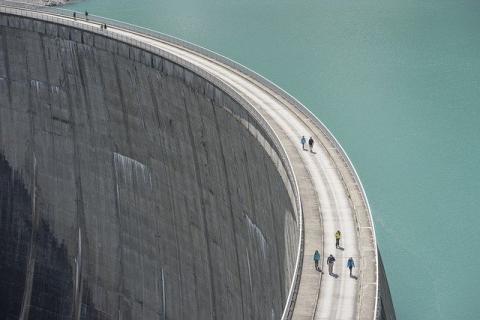
Region: Global
Country: Global / Non-Specific
Sectors: Water and Sanitation
Keywords: Financing, Operation and Maintenance
Document(s):
Investing in Water bytes
Document Details:
World Bank Water Paper, 2012, Diego J. Rodriguez, Caroline van den Berg and Amanda McMahon
All countries face a growing funding gap as they try to keep up with the rehabilitation, operation, and maintenance of aging water infrastructures. New water systems must also be built to cope with growing populations, shifting consumption patterns, and a changing climate. In developing countries, public
and private investment has not kept up with demand for water infrastructure, which increases costs in the long-run. The financial crisis threatens to bring even more uncertainty to an already underfunded sector with inherently low capacity to attract investment.
Private investors prefer to work in middle-income countries where the risk is lower, leaving the poorest countries dependent on volatile public budgets and donor commitments. An estimated 75 percent of water investment in developing countries comes from public sources. Slower growth and lower tax revenues imply that donor commitments, public budgets, and household contributions are at risk of diminishing. As a result, the resources available must be maximized through reforms.
The overarching goal of water sector reform is to promote sustainable service delivery by incrementally moving the burden of infrastructure finance from the public sector to shared investment by the public and private sector. Under a national reform strategy, all stakeholders should participate in the reform cycle by adjusting their performance, and each will start at a different point in the cycle commensurate with existing challenges and capacities. Successful reform depends on strong leadership to coordinate a series of sometimes parallel and sometimes sequenced transformations.
Most countries can improve their financial control and ability to weather the current financial climate by helping utilities to move toward cost recovery and by improving public spending. From targeted subsidies to risk pooling and guarantees, public contributions lay the groundwork for sustainable water service delivery. Improving the way public funds are allocated and transferred will help governments leverage private finance in the long run. When supported by sound governance frameworks, these contributions can foster mutually beneficial partnerships between the public and private spheres that can help fill the financing gap. Public Expenditure Reviews and Results Based Financing are two tools that countries can use to begin identifying their most egregious challenges and piloting more sector development programs that are driven by results.
The international donor community has an important role to play in brokering public-private collaboration and in promoting the consideration of greener planning so that the next generation of water infrastructure is lower maintenance, less expensive, and more efficient. Assessment of tradeoffs at the national level and across water using sectors can yield demand side interventions that are more cost-effective than new large-scale infrastructure. Such interventions can decrease the fiscal burden on poor countries.
Tracking Number: InvestinginWaterInfrastructure_2012_EN
Updated: October 25, 2021